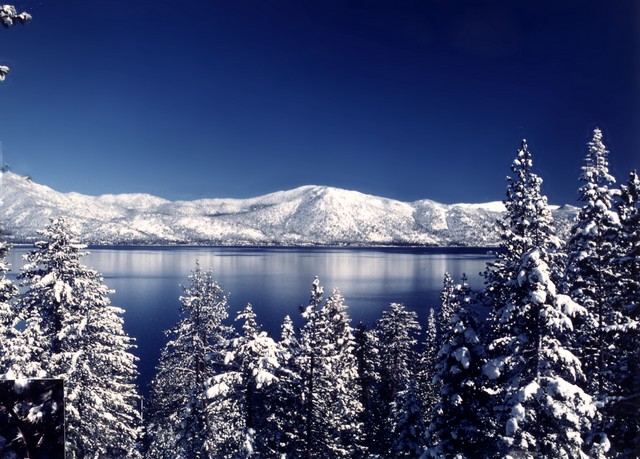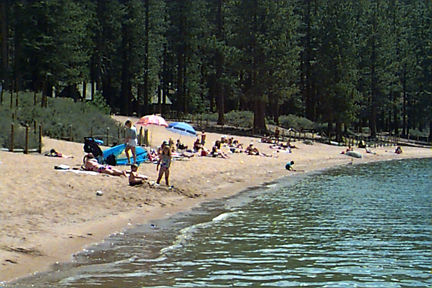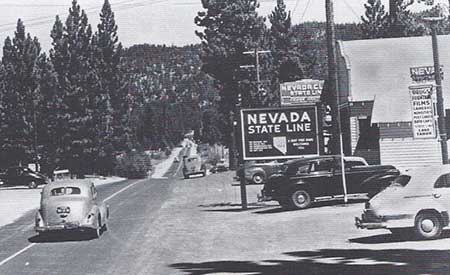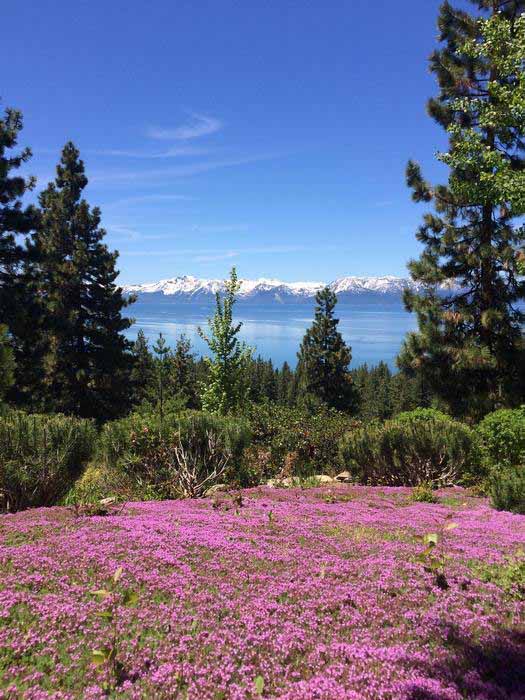Lake Tahoe EventsAwaiting you in Lake Tahoe
 At an elevation of 6,229 feet it is an alpine sea ranking with the most spectacular mountain lakes in the world. The lake encompasses nearly two hundred square miles in this mountain grandeur well over a mile above the level of the ocean. To the west of Tahoe the peaks of the Sierra Nevada rise up to 4,000 feet above the lake, and to the east the craggy summits of the Carson Range soar even higher. Tahoe is cupped between them, nearly forty cubic miles of water, in a pine-blanketed setting of such compelling majesty that within twenty years of its discovery in the virgin wilderness (by John C. Fremont in 1844) the lake had become one of the West’s leading vacation spots.
At an elevation of 6,229 feet it is an alpine sea ranking with the most spectacular mountain lakes in the world. The lake encompasses nearly two hundred square miles in this mountain grandeur well over a mile above the level of the ocean. To the west of Tahoe the peaks of the Sierra Nevada rise up to 4,000 feet above the lake, and to the east the craggy summits of the Carson Range soar even higher. Tahoe is cupped between them, nearly forty cubic miles of water, in a pine-blanketed setting of such compelling majesty that within twenty years of its discovery in the virgin wilderness (by John C. Fremont in 1844) the lake had become one of the West’s leading vacation spots.
 Today, after more than a century of development, Tahoe and its basin rank as one of the finest all-season recreation areas in the world, but the matchless scenic beauty of the region has been exploited at such a pace that the sight of the lake through the pines is as likely to inspire depression as exhilaration.
Today, after more than a century of development, Tahoe and its basin rank as one of the finest all-season recreation areas in the world, but the matchless scenic beauty of the region has been exploited at such a pace that the sight of the lake through the pines is as likely to inspire depression as exhilaration.
Tahoe’s first resort was built in 1863, at Glenbrook, to provide the leisured aristocracy of the booming Comstock with a glamorous vacation spot. It was a spa which could compare with the celebrated Saratoga in New York for elegance, gaiety, and the beauty of its surroundings. The first privately owned vacation “cottage” was built at the lake that same year at Emerald Bay, for stagecoach magnate Ben Holladay.
In 1900 a narrow-gauge railroad connected Tahoe City with the transcontinental railroad at Truckee, prompting construction of the Tahoe Tavern a little south of town to set a new standard of elegance at the lake. Increasingly more people enjoyed Tahoe excursions and vacations.

In 1905 Mrs. Joseph Chanslor churned up over the summits from Sacramento, alone in her chain-driven Simplex and made the trip in the remarkably fast time of eight hours. The automobile had come to Lake Tahoe.
In 1911 lots were subdivided at Tahoe Vista on California’s north shore. But to the horror of the developers, the first purchaser of property turned out to be a notorious Sacramento madam named Cherry de St. Maurice, and a pall fell over further sales in the “exclusive” subdivision.
 Still, at the end of World War II Tahoe still had only about a thousand permanent residents in the villages and hamlets rimming the lake. After the War the 20th century began to arrive at Tahoe with such rapidity and with such impact that conditions at the lake went rapidly out of control.
Still, at the end of World War II Tahoe still had only about a thousand permanent residents in the villages and hamlets rimming the lake. After the War the 20th century began to arrive at Tahoe with such rapidity and with such impact that conditions at the lake went rapidly out of control.
Skiing, never popular on the West Coast except as a countrified pastime in isolated mountain communities, became the fashionable wintertime equivalent of tennis. In the early 1950s Tahoe’s recreation potential had caught the attention of everyone on the Pacific Coast — including that of the Nevada gamblers. In 1956 Harvey Gross tore down the little cafe-cum-slot machines he had been operating at the state line on the South Shore and erected a gambling hall and hotel. The next year, Bill Harrah built a big casino across the street, with its gambling rooms in Nevada and its parking lot in California.
Ski developments began to multiply, gradually transforming Tahoe’s “season” from a busy four-month summer to a brawling year-round affair. When the 1960 Winter Olympics were held at nearby Squaw Valley, Tahoe’s commercial exploitation accelerated in quantum jumps.
One consequence of this profitable activity has been the continuing degradation of the lake’s famous clarity. But despite the development, despite the traffic, despite the drought, despite the algae, despite everything, Lake Tahoe is still one of the most pleasant and beautiful places on earth.



